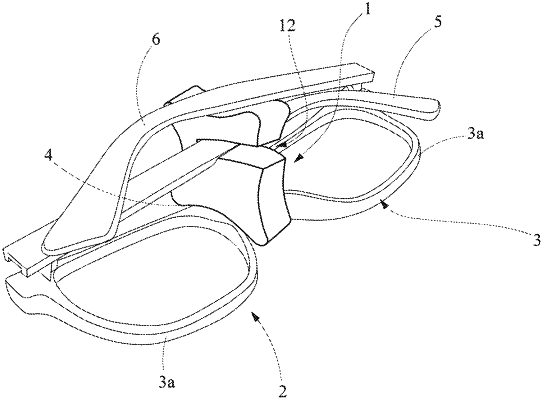|
1. A spacer device for frames (2) of spectacles configured to maintain a pair of arms (5, 6) of the frame spaced apart from each other and with respect to a front mount (3) of the frame when the arms are folded onto the mount in a closing manner, the device comprising a spacer member (7) which has a thickness (S) which is defined between a pair of opposing surfaces (8, 9), the member extending in a main direction (X), between a pair of opposing faces (10, 11), which are configured for contact with the front mount (3) of the frame and the arm (6) of the pair of arms which is folded last onto the mount (3), respectively, the spacer member (7) comprising a channel (12) which extends in the member transversely to the main direction (X) and which extends through the thickness (S) and which is provided in a position between the faces (10, 11), the channel (12) being delimited by a pair of walls (13, 14) which face each other in a mutually spaced apart relationship and which are connected at an end thereof to a base surface (15) of the channel, the channel (12) configured to be engaged by the arm (5) of the pair which is folded first onto the mount so as to remain spaced apart both from the mount (3) and from the other arm (6) adjacent thereto, wherein the face (10) of the spacer member (7) which is intended for contact with the front (3) of the frame has a concave surface profile.
|
